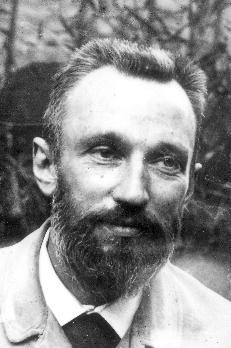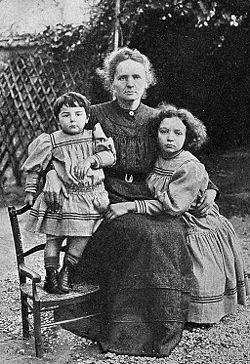Pierre Curie
Pierre Curie by csyed3
Early Life
Pierre Curie was born on May 15, 1859 in Paris. His father, Eugène Curie, was a physician and began to teach Pierre Curie math and geometry from a very young age. He attended the Faculty of Sciences at the Sorbonne and earned his degree at the age of 18. Not having enough money to immediately proceed with his doctorate, he began work as a laboratory instructor. Shortly after, in 1880, Pierre Curie with the help of his older brother, Jacques Curie discovered that the compression of crystals causes an electric action potential. During his research he created an instrument he named the Curie Scale which could take very precise measurements needed for his work. The very next year the two brothers showed that the opposite was also true; placing crystals in an electric field would cause them to deform. This discovery is known as piezoelectric effects and it is used in crystal oscillators which are used in modern electronic circuits. While working in his lab he met Marie Curie, then Maria Skłodowska, and took her on as a lab student and into his research. Finally in 1895, he became Professor of Physics and got his Doctor of Science degree. This was the same year Maria agreed to marry him.
For more information on his wife, Marie Curie, please reference Marie Curie.
Scientific Contributions
Curie's Law
For his doctoral thesis, Pierre Curie studied various forms of magnetism including paramagnetism whereby an external magnetic field attracts objects, causing internal magnetic fields in the same direction. During his research he discovered that temperature had an effect on paramagnetism. He wrote a formula to predict this effect, known as Curie's Law. The formula is [math]\displaystyle{ {\frac{B}{T}} * C = M }[/math] where [math]\displaystyle{ B }[/math] is the magnetic field in teslas [math]\displaystyle{ T }[/math] is the temperature in kelvin [math]\displaystyle{ C }[/math] Curie's Constant and [math]\displaystyle{ M }[/math] is the magnetisation.
Radioactivity
Pierre did his research on radioactivity with his wife, Marie Curie. In their work they discovered and studied polonium and radium. They coined the term radioactivity and were some of the first to study it. Upon noticing heat coming from radium particles, Pierre was the first to discover nuclear energy. He was able to use his prior knowledge on magnetism to analyze the radiation coming from these particles to discover that some held a positive charge (alpha radiation) some held a negative charge (beta radiation) and some no charge at all (gamma radiation). Because of the work of him and his wife, a curie became a unit of measurement of radioactive decay. In 1903 the couple as awarded the Nobel Prize for their research on radiation.
A more in depth summary of the Curie's work can be found here.
Personal Life
Pierre Curie married Marie Currie in 1895. Together, they had two daughters named Ève and Irène. Pierre, Marie, Irène, and her husband all became physicists involved in the study of radioactivity. In 1906 Pierre Curie died at the age of 46 in an accident when he got run over by a horse drawn cart.
See also
Further reading
http://www.ncbi.nlm.nih.gov/pmc/articles/PMC1891197/ https://books.google.com/books?hl=en&lr=&id=yQ7CAgAAQBAJ&oi=fnd&pg=PP1&dq=marie+curie&ots=8XwPXi9mvS&sig=_p-sYln8QFniJFHjHNysZ5nWTY8#v=onepage&q=marie%20curie&f=false
External links
http://www.nobelprize.org/nobel_prizes/physics/laureates/1903/marie-curie-bio.html http://www.ncbi.nlm.nih.gov/pmc/articles/PMC1891197/
References
http://www.nobelprize.org/nobel_prizes/physics/laureates/1903/pierre-curie-bio.html http://www.biography.com/people/pierre-curie-39098 https://www.aip.org/history/curie/pierre.htm http://www.atomicarchive.com/Bios/PierreCurie.shtml http://www.britannica.com/biography/Pierre-Curie

